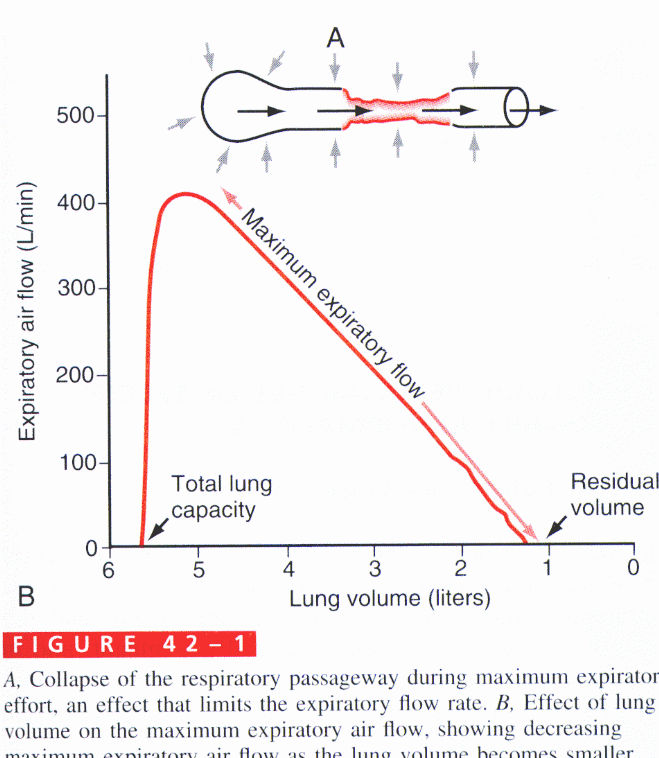Respiration is one of the vital physiological processes required for a normal homeostasis. It is also a complicated process where various mechanisms are interconnected to ensure a smooth air flow through the relevant pathways (Guyton and Hall, 2006). A defect in the respiratory system could lead to various complications which may be due to obstructions or impairments in the ventilation. There is a need to gain insights in this regard. The present description is highlighted in the similar context. Respiration involves muscles inspiratory and expiratory muscles (Guyton and Hall, 2006). Expiratory muscles play role in active respiration that involves muscles like internal intercostall muscles and abdmonini recti. There are special devices that provide a clear picture on lung volumes(Guyton and Hall, 2006). These are “Spirometries” A Spirometery enables to record changes in the volume of lung (Guyton and Hall, 2006). When a person is susceptible to ventilatory impairments spirometry could assess the volume of gas inspired and exhaled into the spirometer (Guyton and Hall, 2006). This is better reflected on a timer more probably a spirogram. This could also lead to changes in the lung volume and alveolar pressure (Guyton and Hall, 2006).The spirometry tests also reflect the lung compliance which is the feasibility with which the lung space gets occupied or filled. It may become low at very high lung volumes (Guyton and Hall, 2006).
A forced expiratory compliance curve beyond the normal range may indicate a ventilatory impairment (Guyton and Hall, 2006). Since spirometry test is related to expiration in addition to inspired ai, it gives better indication of a forced expiration associated with ventilary impairment. Impairments of such kind would be restrictive. This can be better explained with the help of a Maximum Expiratory Fllow-Vollume (MEFV) Curve (Guyton and Hall, 2006).
This curve may be considered as an index of airways that are subjected to compression and /or forced expiration, there could be air way compression which may lead to a high resistance of flow and ultimate decrease of expiratory airflow. (Guyton and Hall, 2006)

As the expiratory pressure reaches a barrier, the final affect is negligible change in the airflow related to expiration followed by an high expiratory effort. This could be better considered opposing actions of increased expiratory effort and reduced expiratory airflow(Guyton and Hall, 2006).In order to better determine if airway obstruction is reversible, spirometery tests cane be linked to noninvasive tests like FVC and FEV1 (Guyton and Hall, 2006).These tests need the patient to breathe as difficult as possible following a complete inhalation. The spirometry tests might then give a normal or abnormal result based on the volume of air occupied in the lungs (Guyton and Hall, 2006). For example, in obstructive disorders FEV1/FVC is less than 80%. This could be considered as an indication of reversible airway obstruction. This strategy could be better understood by noting measurements compared against the known or predicted values (Guyton and Hall, 2006).
For this, Spirometry test need to rely on effects of gender, age and size in order to better determine whether the airway obstruction is reversible or not. This could be because depending on the subject the airway obstruction could change (Guyton and Hall, 2006). For example, a heavy or large person may have larger lungs, with larger lung capacities and volumes when compared to a smaller person. As such, male individuals have larger lungs than women although the body size differences are considered. Thus, the spirometry test may be come a useful tool to determine the obstructive airflows whether it is reversible or not keeping in view of lung capacities and volumes. MEFV curves on the other hand also provide vital clues with to the reversible obstructive airflow. These can be better associated with lung compliance , alveolar air pathway and diffusion(Guyton and Hall, 2006).Since, the expiration relies on muscles, the spirometry test can provide much more clear representation of obstructive airflow when the muscle physiology and dynamics are understood relevant to the ventillatory impairments (Guyton and Hall, 2006).
References
Guyton AC & Hall JE (2006) Textbook of Medical Physiology (11th ed), Philadelphia, Elsevier Saunders.